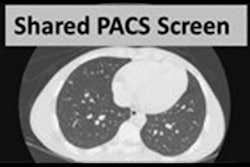
TORONTO - Face-to-face consultations between radiologists and patients may improve the health of patients, as well as the visibility of radiologists, according to a presentation at the annual American Roentgen Ray Society (ARRS) meeting.
The idea of in-person meetings with patients fits well with the increasing focus on "adding value" to radiology and creating patient-centered medical care, said presenter Dr. Mark Mangano of Massachusetts General Hospital (MGH).
"There's a growing trend toward pay for performance rather than pay for procedure, with a focus on value-added practices," he said. " 'Value' may seem like a corporate buzzword, but it does have real meaning for radiology -- an effort to improve patients' experience and maximize healthy outcomes while minimizing costs."
What's the best way to make these consults happen? Currently, there's no well-defined means of connecting patients and radiologists to review images and answer questions. So Mangano and colleagues created a pilot consultation clinic for diagnostic radiology, and then evaluated whether in-person meetings with patients during the clinic motivated them to improve their health.
The program began with 22 patients referred from a single primary care provider, and it ran for three weeks, Mangano said. Patients were selected for potential referral based on showing changes of atherosclerosis, hepatic steatosis, or emphysema on prior imaging; they completed a survey before and after meeting with the radiologist to assess how useful they thought the consultation had been.
In all, 15 women and seven men with an average age of 66 participated. Seventeen of the patients had prior evidence of atherosclerosis on imaging, six had prior evidence of hepatic steatosis, and two had prior evidence of emphysema.
"Atherosclerosis, hepatic steatosis, and emphysema are common diseases and are frequently found on imaging, but they're somewhat intangible conditions for patients to understand," Mangano said. "We can see these diseases before the patient feels any symptoms, and that gives us an opportunity to help patients accept the diagnosis and hopefully make lifestyle changes to prevent the disease from progressing."
How it worked
As patients arrived for routine primary care visits, office staff informed them of the opportunity to meet with a radiologist to review their most recent imaging, Mangano said. If the person was interested, staff then contacted a radiologist to schedule a 30-minute appointment. Initially, patients met with the radiologist in space provided by MGH's interventional radiology clinic, but later they met in office space next to the primary care physician's office.
The consult consisted of an explanation of the goals of imaging and the radiologist's role, a review of the patient's images, a discussion of ways the patient could modify his or her lifestyle to prevent the condition from getting worse, and time for the patient to ask any questions. Patients viewed not only their own images, but also images of normal and extreme cases of the disease.
The study participants rated the consultation as very helpful, with a mean score of 4.8 on a five-point scale, and all of them said they would take the opportunity to review studies with the radiologist again. After the consultation, more patients preferred involvement of the radiologist in discussions of their imaging exam results, compared with before the consultation, and 95% of the participants were comfortable receiving both normal and abnormal results from the radiologist.
After the consultation session, patients had a significantly improved understanding of a radiologist's role, and all of them were able to correctly identify the radiologist as a physician who interprets medical imaging.
Is a picture worth a thousand words?
The researchers also found that patients were statistically more motivated to improve their overall health, exercise regimen, and diet after the consultation, compared with before the session. Of course, whether this motivation actually translates into disease prevention is unclear, Mangano said.
"While we are motivating patients, we don't know if that will lead to change," he said. "We plan to follow up with these patients in 12 months to evaluate this. I suspect there will need to be additional support in place to motivate patients to make lifestyle changes beyond the consult."
An added benefit of face-to-face consults is radiologists' own work fulfillment, according to Mangano.
"In terms of career satisfaction, for me, it was amazing," he said. "It was rewarding for me to reconnect with patients -- and it's good for the specialty in the long run."




















